
Renault Kadjar 4x4 (2015-2022) engines, drive and performance
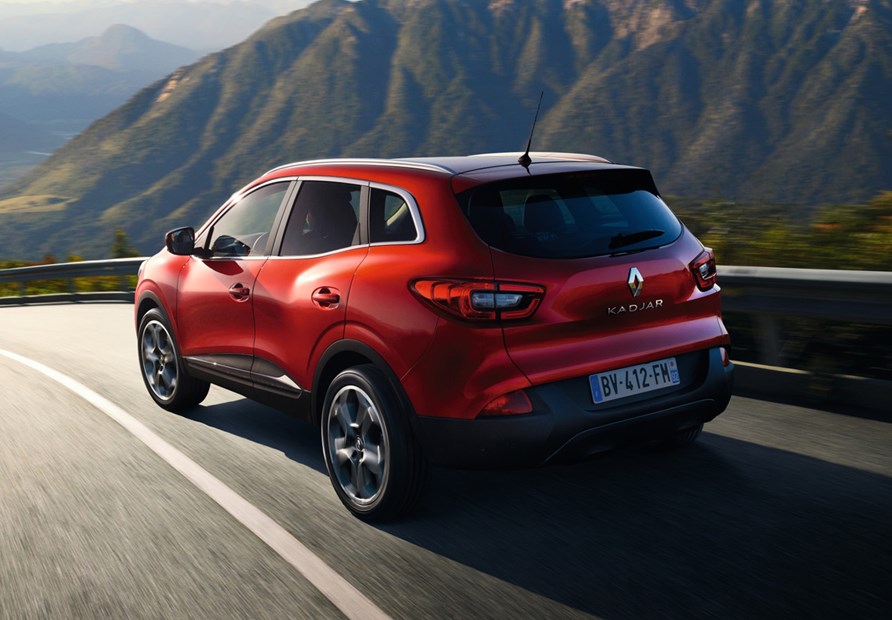
- Choice of two diesel and two petrol engines
- Emphasis here is economy not performance
- 1.3-litre TCe petrol impressive; diesels economical
There are four engine options metering out Renault Kadjar performance ranging from a 115hp 1.5-litre Blue dCi diesel to a 160hp 1.3-litre TCe petrol. All-wheel drive and an EDC twin-clutch automatic transmission are available on selected variants, so check the specs before you buy.
Two Blue dCi diesel engines on offer
The entry-level diesel engine – a 115hp 1.5-litre Blue dCi unit producing 260Nm of torque – is good for 0-62mph in 11.7 seconds and a top speed of 120mph. This comes as standard with a six-speed manual gearbox, but a seven-speed EDC dual-clutch automatic is also an option. From summer 2018, the 115hp Blue dCi replaced the old dCi 110 engine that had 260Nm of torque and was capable of 0-62mph in 11.9 seconds, with a top speed of 113mph. It was also available with an EDC automatic transmission.
Also discontinued from the summer of 2018 was the dCi 130 engine, a 1.6-litre unit with 130hp and 320Nm from 1,750rpm. Its 0-62mph time of 9.9 seconds (or 10.5 seconds in four-wheel drive form) and top speed of 118mph looked reasonable on paper, but didn’t tell the full story. It was smooth, punchy and very nice to drive. Most French diesels are like this, but thanks to the refined nature of the rest of the Kadjar, the overall effect is impressive. Replacing this higher-output motor is a new 1.7-litre Blue dCi 150 which, unsurprisingly, produces 150hp and 340Nm. This version comes with front-wheel drive as standard, but a four-wheel drive system is available at extra cost. This car is manual-only, too.
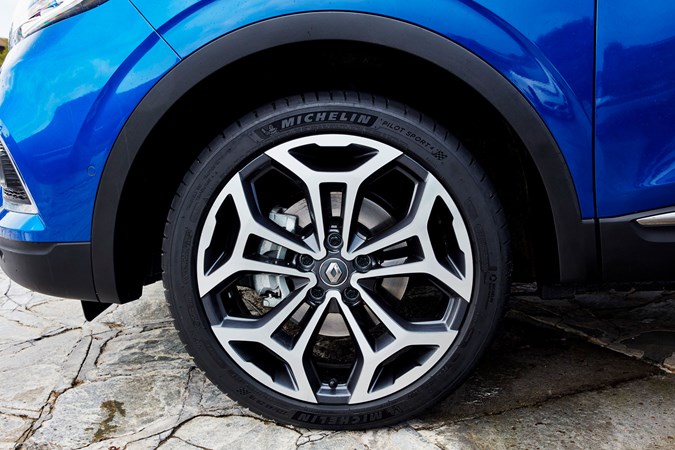
Single petrol engine available in 140hp and 160hp form
The sole petrol offering in the Kadar is a turbocharged 1.3-litre TCe engine. It’s available in two different outputs – 140hp and 160hp – with front-wheel drive and manual transmission only. Opt for the TCe 140 (140hp) variant and you’ll have 240Nm of torque to play with, good for 0-62mph in 9.4 seconds and a top speed of 121mph.
If you want a little more power, the TCe 160 (160hp) model should suffice, even if its 0-62mph is identical at 9.4 seconds. Torque is 260Nm while top speed is 128mph. In reality, there feels like little difference between the two engines on the move. Whether that says more about the 140hp or less about the 160hp remains to be seen, but you won’t be left feeling short-changed if you go for the lower-output motor.
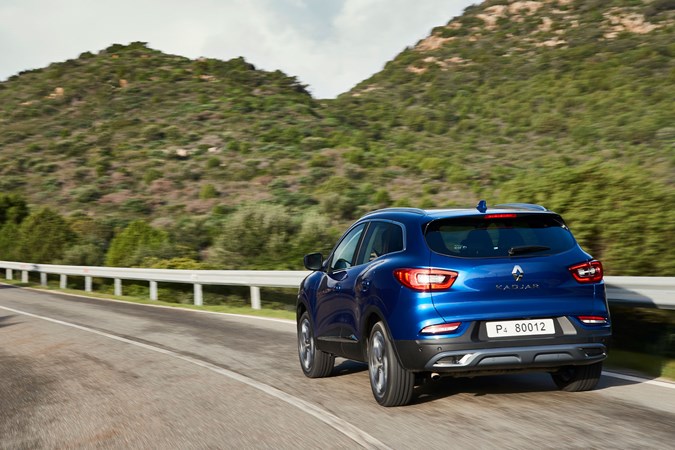
It’s smooth and refined, with a surprising amount of punch when ascending hills or with people on board. It’s well worth a look and is a huge improvement over the older TCe petrols. The 1.3-litre engines mentioned above replaced the existing 1.2-litre TCe units in summer 2018. These were available in 130hp and 165hp guises.
The former had 205Nm of torque from 2,000rpm and neede to be worked quite hard to get the best from it. This had a noticeable effect on fuel economy, not to mention the fact it sounded strained under load. 0-62mph was completed in 10.1 seconds (10.7 for the EDC automatic) while top speed came in at 119mph. Meanwhile, the also discontinued TCe 165 version was a little perkier, yet only came with a manual gearbox. Its 0-62mph time of 9.2 seconds wasn’t much quicker than the dCi 130 diesel, but it did go on to a top speed of 127mph. You could only pair this engine with the manual gearbox.
The manual gearbox is a blot on the landscape of a very good performance from Renault. The gearshift has an incredibly long throw, and there was some movement from side-to-side when the car was in gear, too. The same goes for the EDC dual-clutch gearbox. The lever itself feels like a bit of an afterthought which makes it unpleasant to use, but it’s smooth and responsive enough if you like relaxed driving. Demand too much of it by putting your foot down too heavily and the car can jolt forwards uncomfortably.
Ride and handling
- Tidy handling and pleasing steering
- Optional 4WD on top-spec diesel
- Lightness boosts handling and efficiency
Get past the fact that this isn’t a sports car and you’ll discover a crossover that handles well. It’s based on the same underpinnings as the Qashqai, and we can’t really fault that. There’s some bodyroll if you find yourself taking a corner too quickly, but driving normally this is nothing to worry about, and it remains composed in normal driving.
We found the steering to be great too. It’s heavier on diesel models, which improves communication through the steering wheel, but in general it’s accurate and well-judged for its application.

You have the option of a four-wheel drive system on the Blue dCi 150 engine. It uses the front wheels for the majority of the time, only sending power to the rears when slip is detected. There are three modes for this: 2WD (two-wheel drive), Auto (the car decides how to administer the power), and Lock – which sends exactly 50% of engine output to each end of the car up to 25mph. While this system works very well indeed, and allows the Kadjar to venture off-road with some success, it’s telling that few buyers actually plump for this when buying a car of this type. You’ll save fuel and have a lighter car if you leave it off. And the Kadjar’s weight is another reason this car handles in such an accomplished fashion. A low-spec petrol version tips the scales at just over 1,300kg, which really isn’t much given that many small hatchbacks weigh far more.


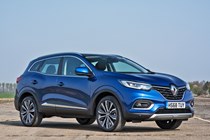
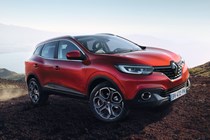
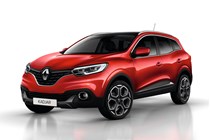
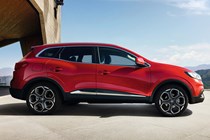
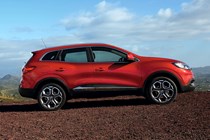
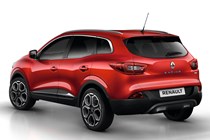
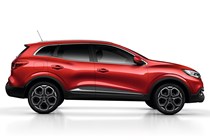
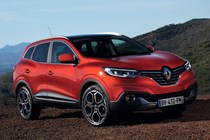
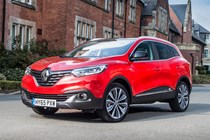
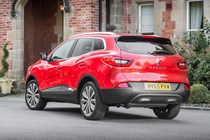
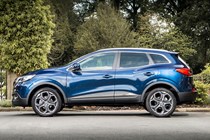
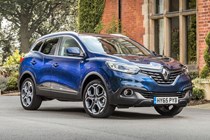
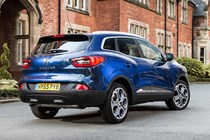
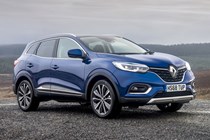
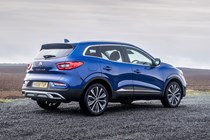
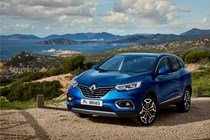


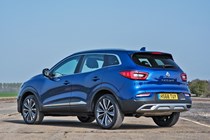
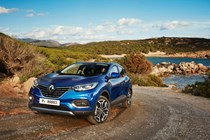
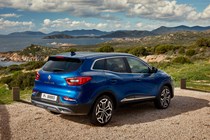
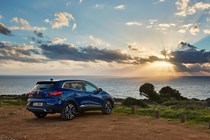
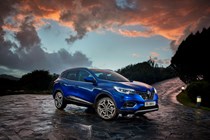
.jpg)
.jpg)
.jpg)
.jpg)
.jpg)
.jpg)
.jpg)
.jpg)
.jpg)
.jpg)
.jpg)
.jpg)
.jpg)
.jpg)
.jpg)
.jpg)
.jpg)
.jpg)
.jpg)
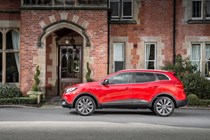

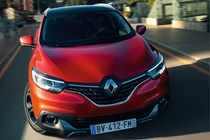
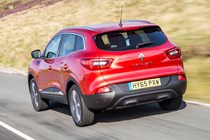
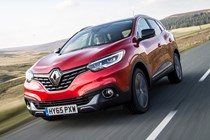

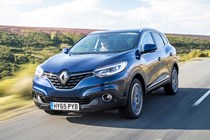
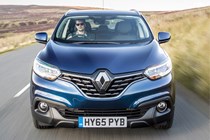
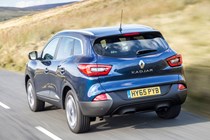

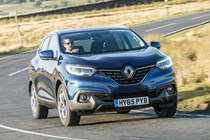
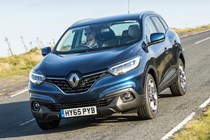
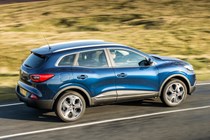
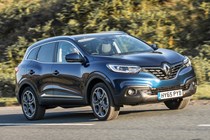

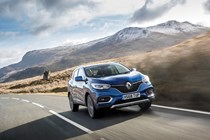
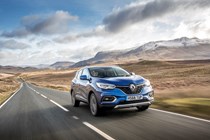
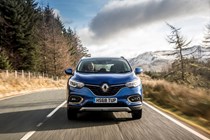
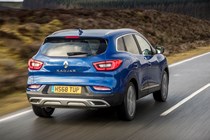
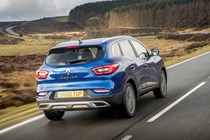
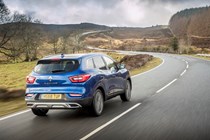
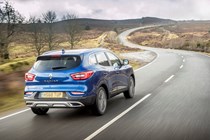
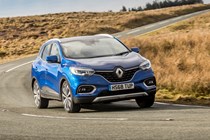
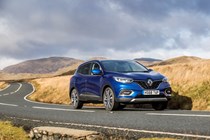
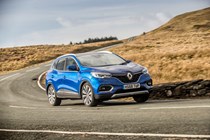
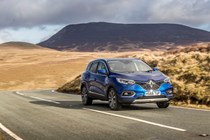
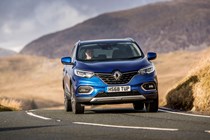
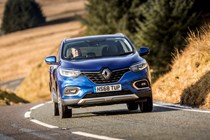

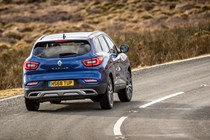
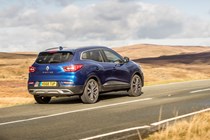
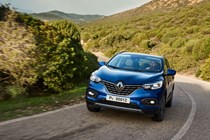

.jpg)
.jpg)
.jpg)
.jpg)
.jpg)
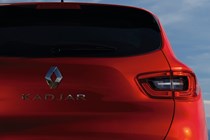
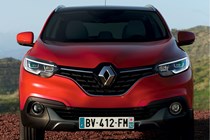
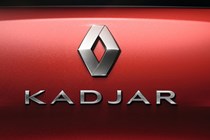
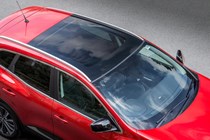
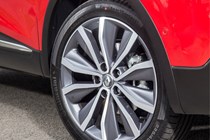
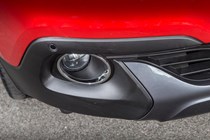
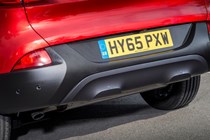
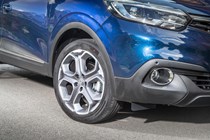
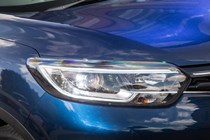
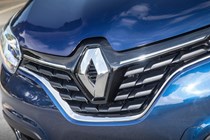
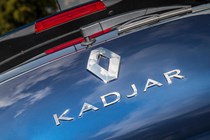
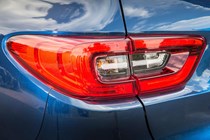
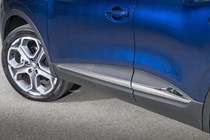

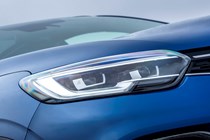
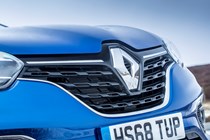
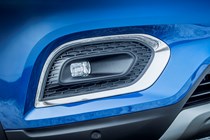
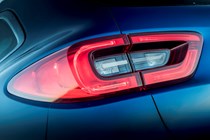
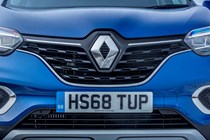
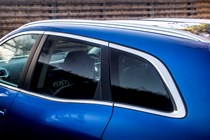

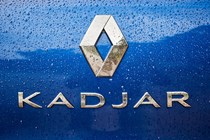
.jpg)

.jpg)
.jpg)
.jpg)
.jpg)
.jpg)
.jpg)
.jpg)
.jpg)
.jpg)
.jpg)
.jpg)
.jpg)
.jpg)
.jpg)
.jpg)
.jpg)
.jpg)
.jpg)
.jpg)
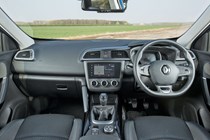

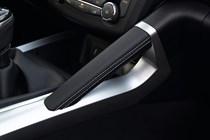
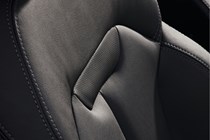


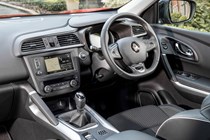
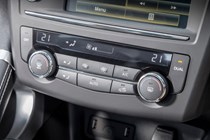
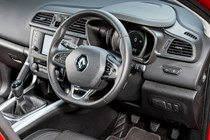
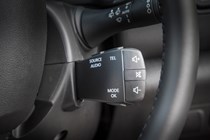
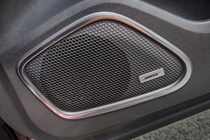
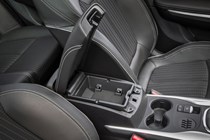
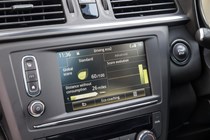
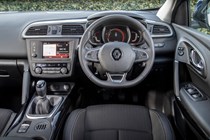
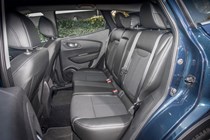
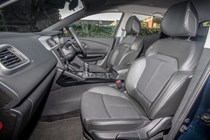
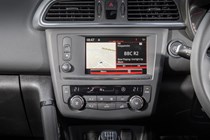
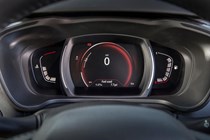
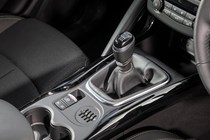
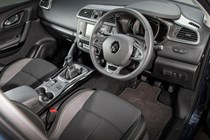
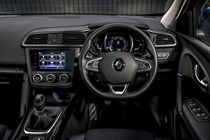
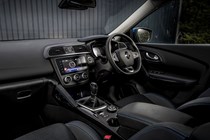
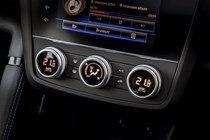

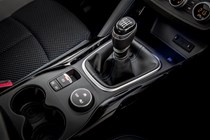
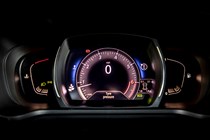
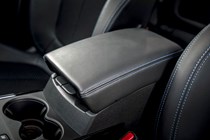
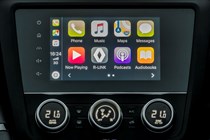
.jpg)
.jpg)
.jpg)
.jpg)
.jpg)
.jpg)
.jpg)
.jpg)
.jpg)
.jpg)
.jpg)
.jpg)
.jpg)
.jpg)
.jpg)
.jpg)
.jpg)
.jpg)
.jpg)
.jpg)
.jpg)
.jpg)
.jpg)
.jpg)
.jpg)
.jpg)
.jpg)
.jpg)
.jpg)
.jpg)
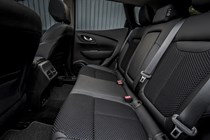
.jpg)
.jpg)
.jpg)
.jpg)
.jpg)
.jpg)
.jpg)
.jpg)
.jpg)
.jpg)
.jpg)
.jpg)
.jpg)
.jpg)
.jpg)
.jpg)
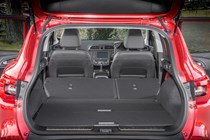

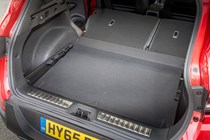
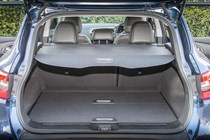
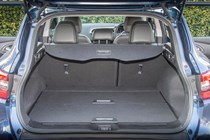
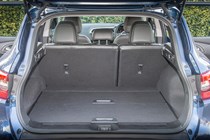

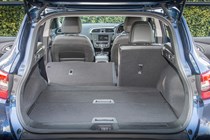
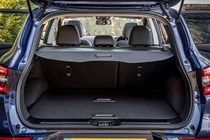
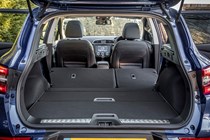

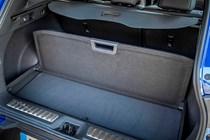
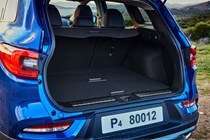
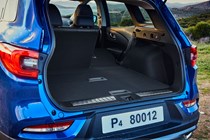
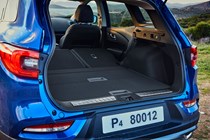
.jpg)
.jpg)
.jpg)
.jpg)
.jpg)
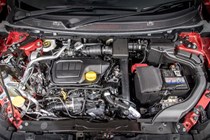
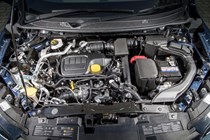
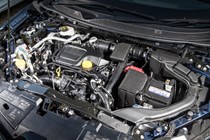
.jpg)
.jpg)
.jpg)
.jpg)

























.jpg?quality=50)
.jpg?quality=50)
.jpg?quality=50)
.jpg?quality=50)
.jpg?quality=50)
.jpg?quality=50)
.jpg?quality=50)
.jpg?quality=50)
.jpg?quality=50)
.jpg?quality=50)
.jpg?quality=50)
.jpg?quality=50)
.jpg?quality=50)
.jpg?quality=50)
.jpg?quality=50)
.jpg?quality=50)
.jpg?quality=50)
.jpg?quality=50)
.jpg?quality=50)

































.jpg?quality=50)
.jpg?quality=50)
.jpg?quality=50)
.jpg?quality=50)
.jpg?quality=50)






















.jpg?quality=50)

.jpg?quality=50)
.jpg?quality=50)
.jpg?quality=50)
.jpg?quality=50)
.jpg?quality=50)
.jpg?quality=50)
.jpg?quality=50)
.jpg?quality=50)
.jpg?quality=50)
.jpg?quality=50)
.jpg?quality=50)
.jpg?quality=50)
.jpg?quality=50)
.jpg?quality=50)
.jpg?quality=50)
.jpg?quality=50)
.jpg?quality=50)
.jpg?quality=50)
.jpg?quality=50)




























.jpg?quality=50)
.jpg?quality=50)
.jpg?quality=50)
.jpg?quality=50)
.jpg?quality=50)
.jpg?quality=50)
.jpg?quality=50)
.jpg?quality=50)
.jpg?quality=50)
.jpg?quality=50)
.jpg?quality=50)
.jpg?quality=50)
.jpg?quality=50)
.jpg?quality=50)
.jpg?quality=50)
.jpg?quality=50)
.jpg?quality=50)
.jpg?quality=50)
.jpg?quality=50)
.jpg?quality=50)
.jpg?quality=50)
.jpg?quality=50)
.jpg?quality=50)
.jpg?quality=50)
.jpg?quality=50)
.jpg?quality=50)
.jpg?quality=50)
.jpg?quality=50)
.jpg?quality=50)
.jpg?quality=50)

.jpg?quality=50)
.jpg?quality=50)
.jpg?quality=50)
.jpg?quality=50)
.jpg?quality=50)
.jpg?quality=50)
.jpg?quality=50)
.jpg?quality=50)
.jpg?quality=50)
.jpg?quality=50)
.jpg?quality=50)
.jpg?quality=50)
.jpg?quality=50)
.jpg?quality=50)
.jpg?quality=50)
.jpg?quality=50)















.jpg?quality=50)
.jpg?quality=50)
.jpg?quality=50)
.jpg?quality=50)
.jpg?quality=50)



.jpg?quality=50)
.jpg?quality=50)
.jpg?quality=50)
.jpg?quality=50)